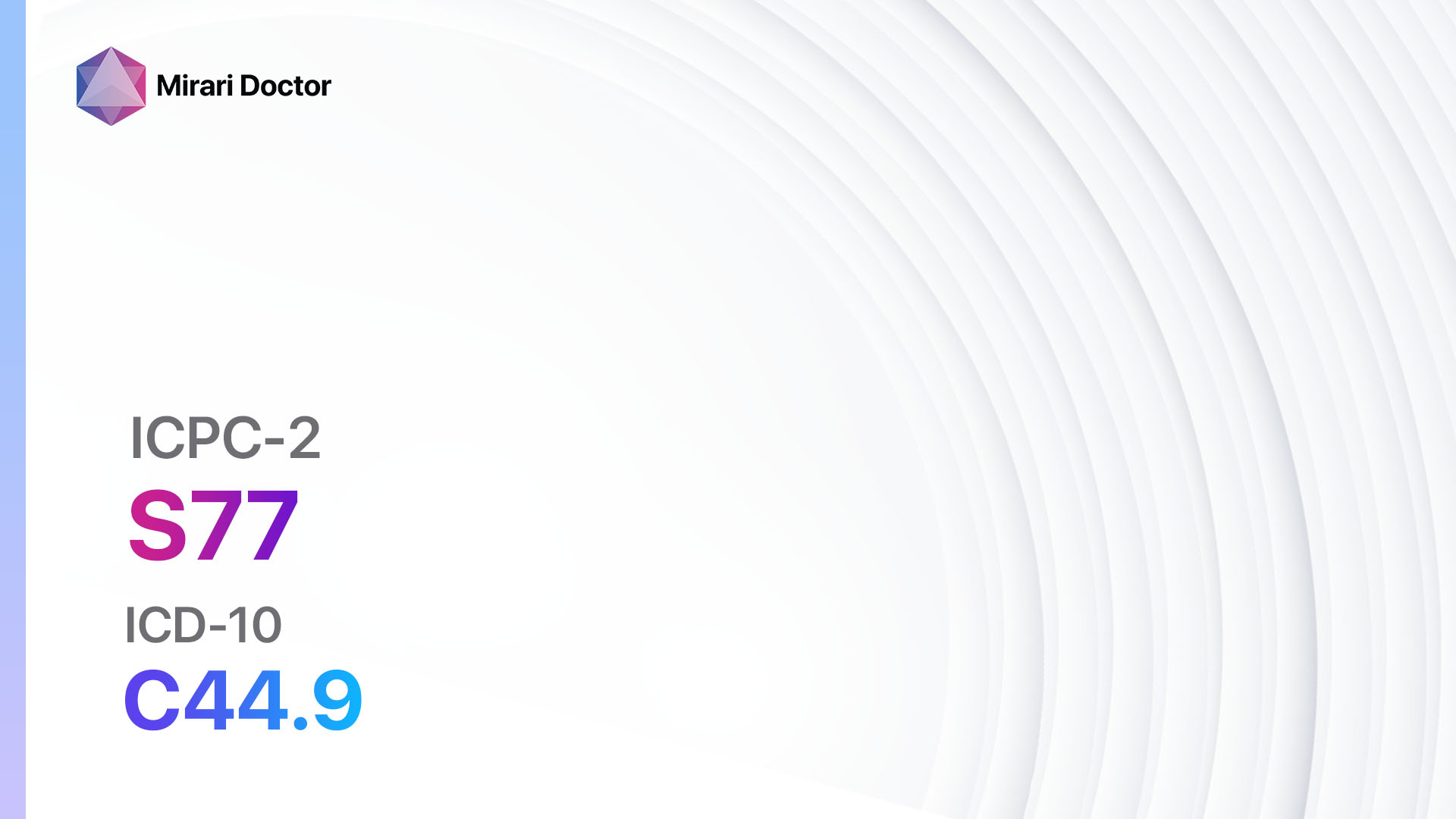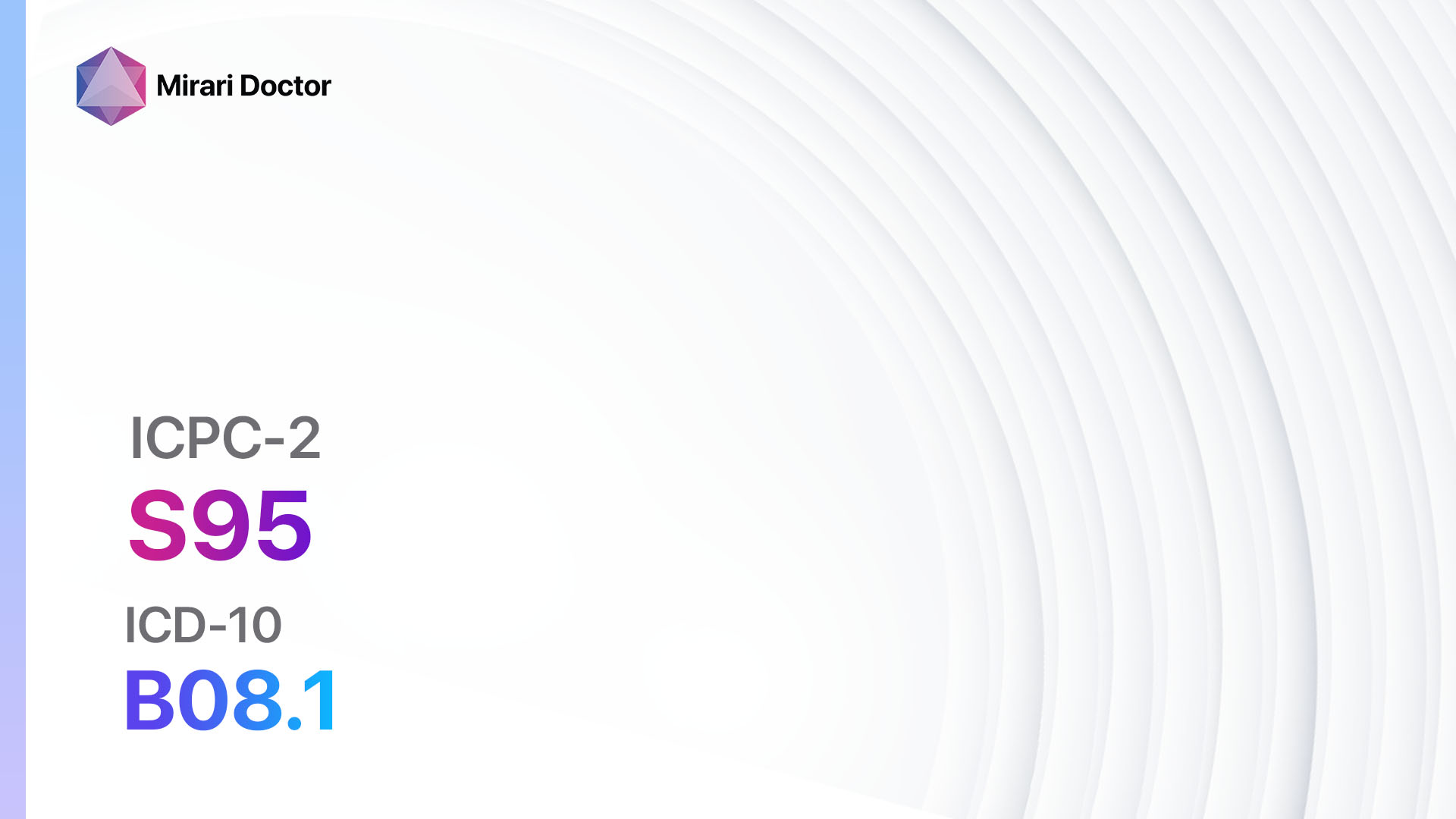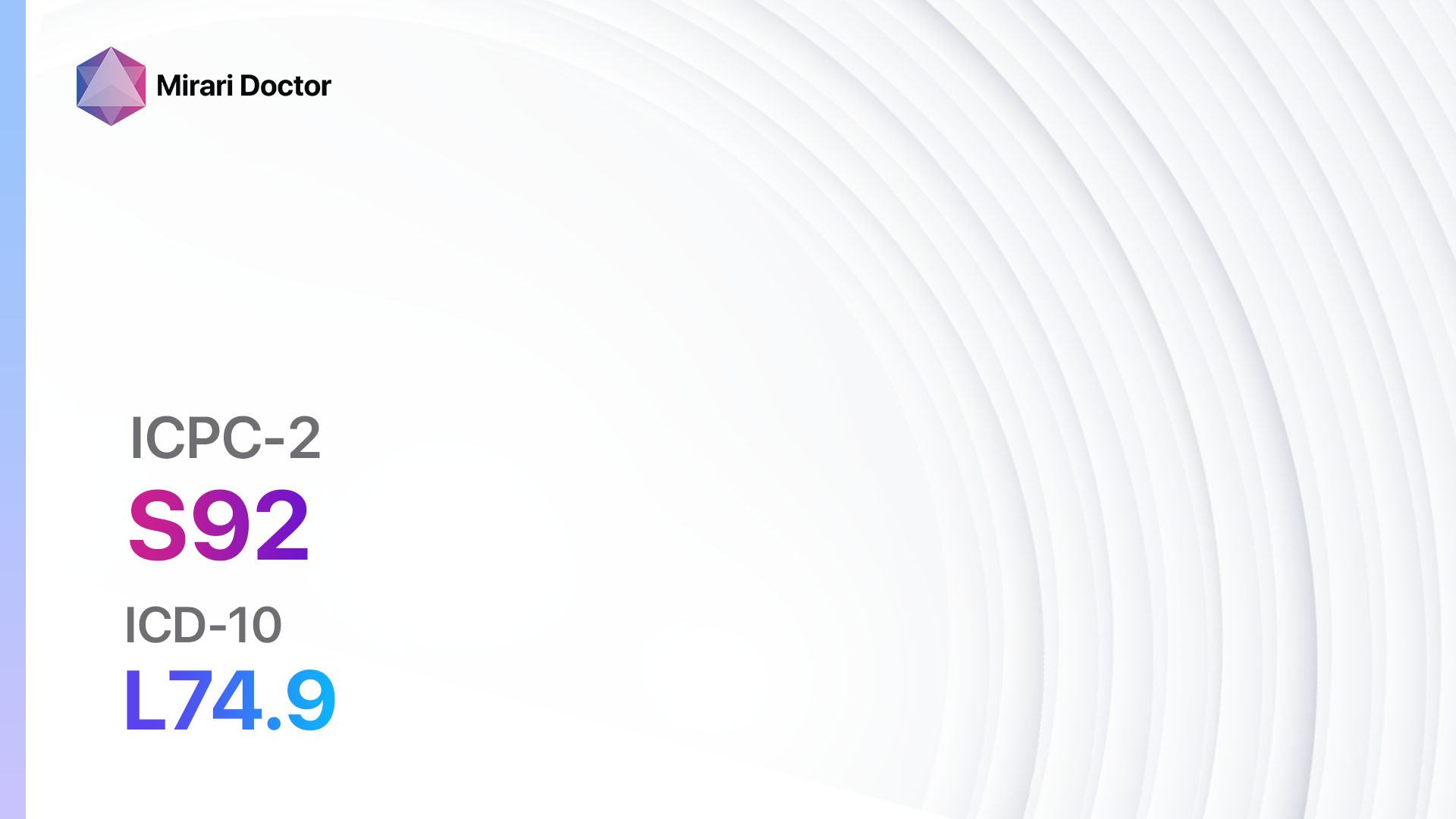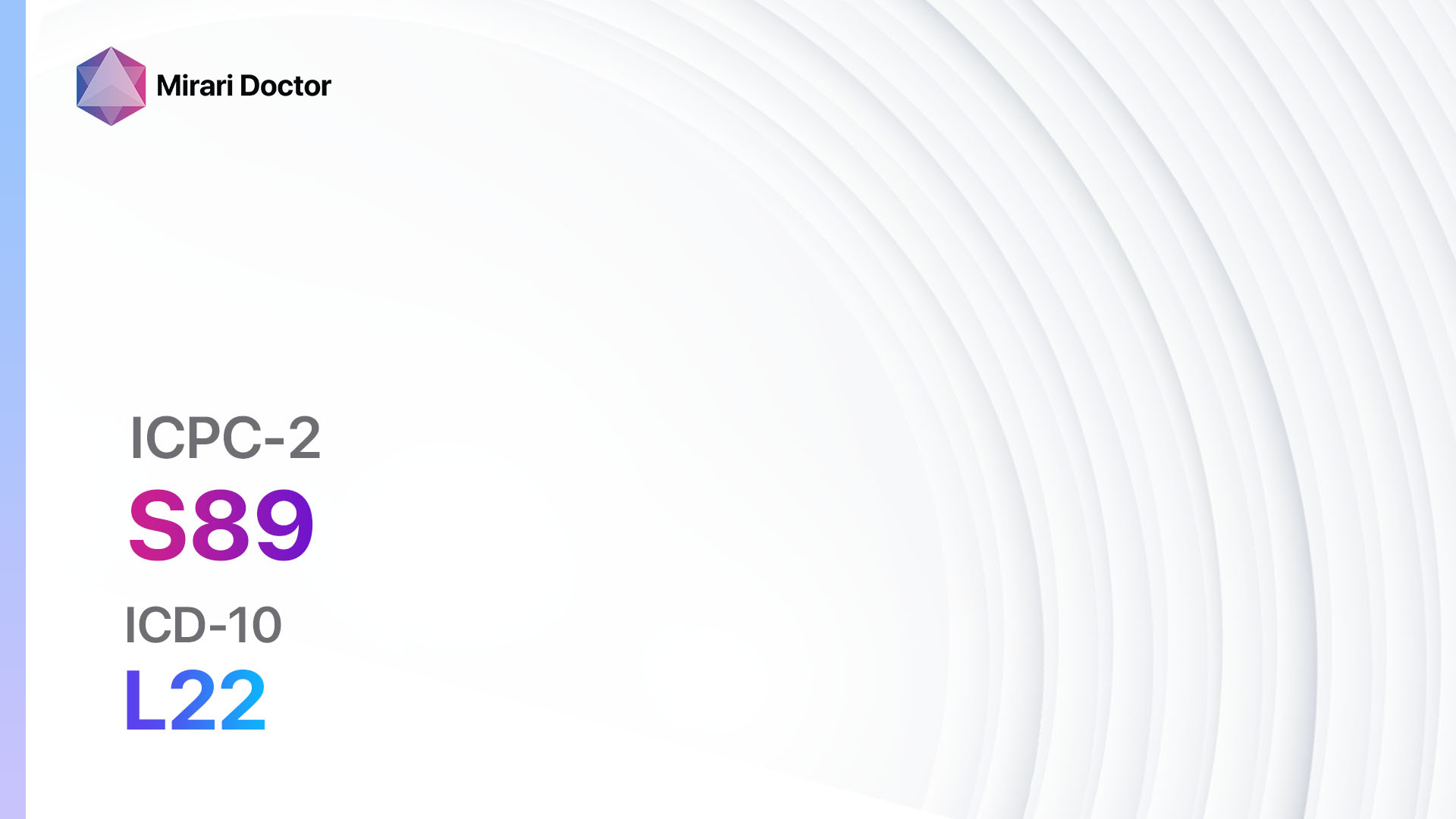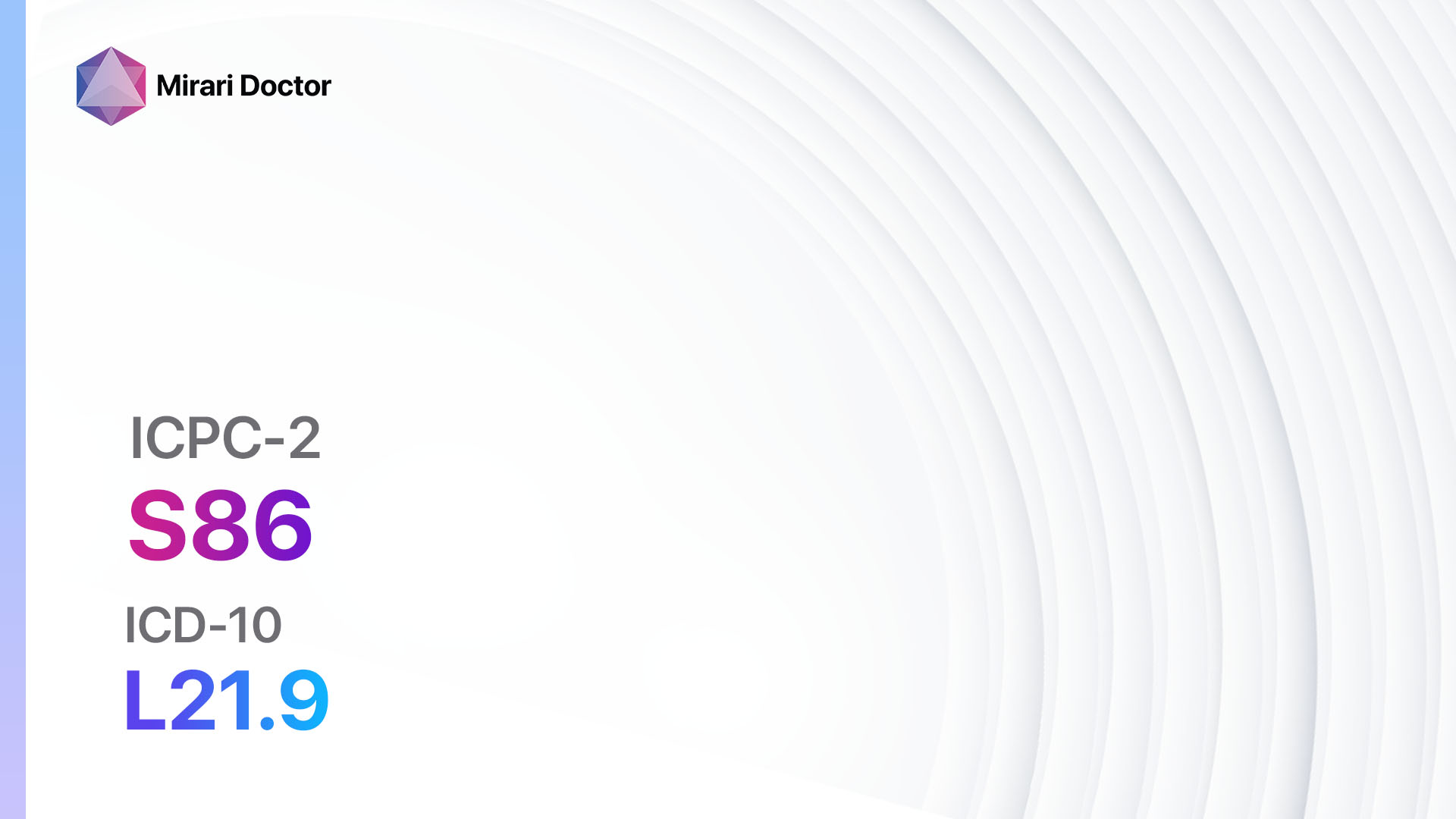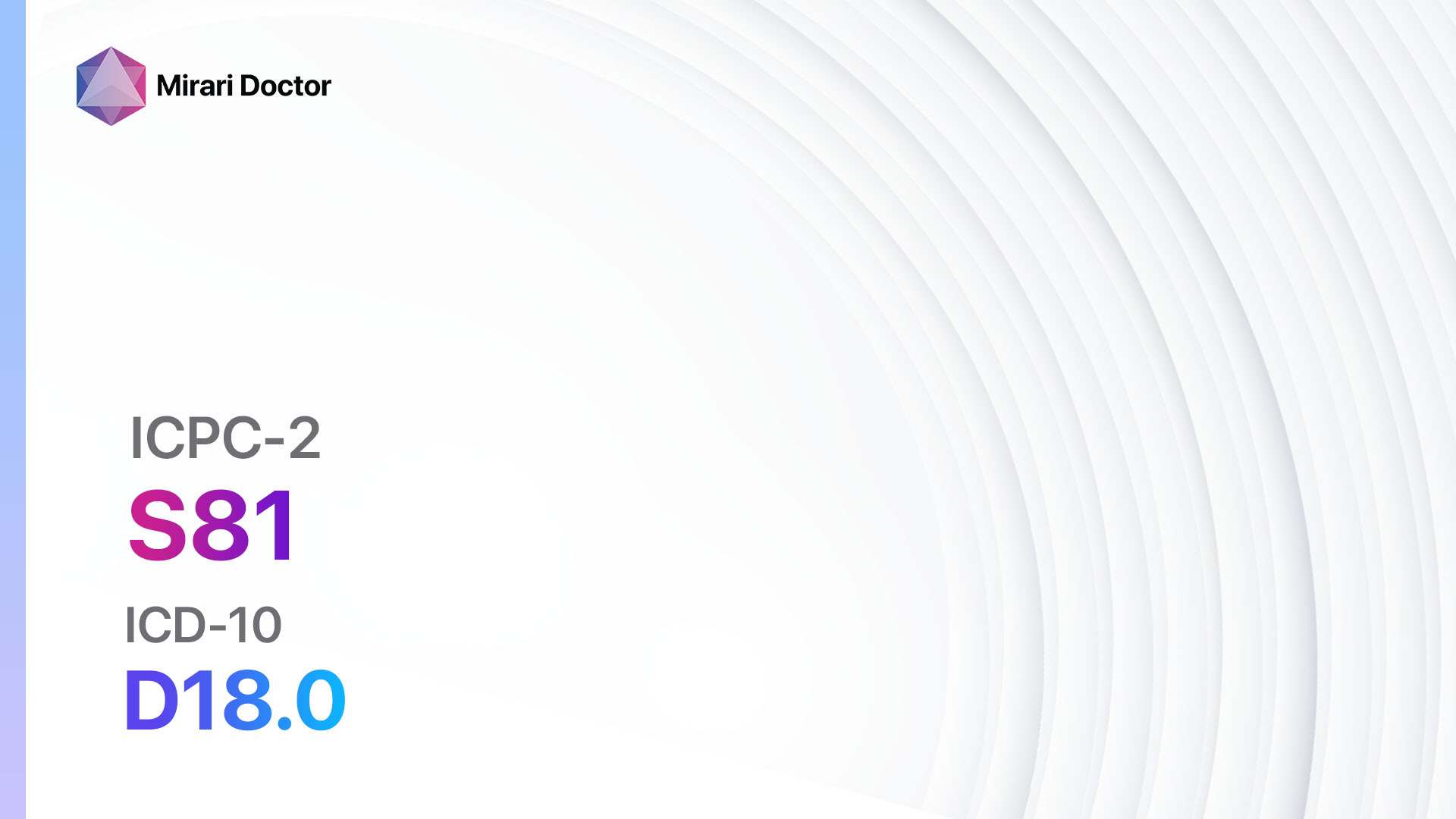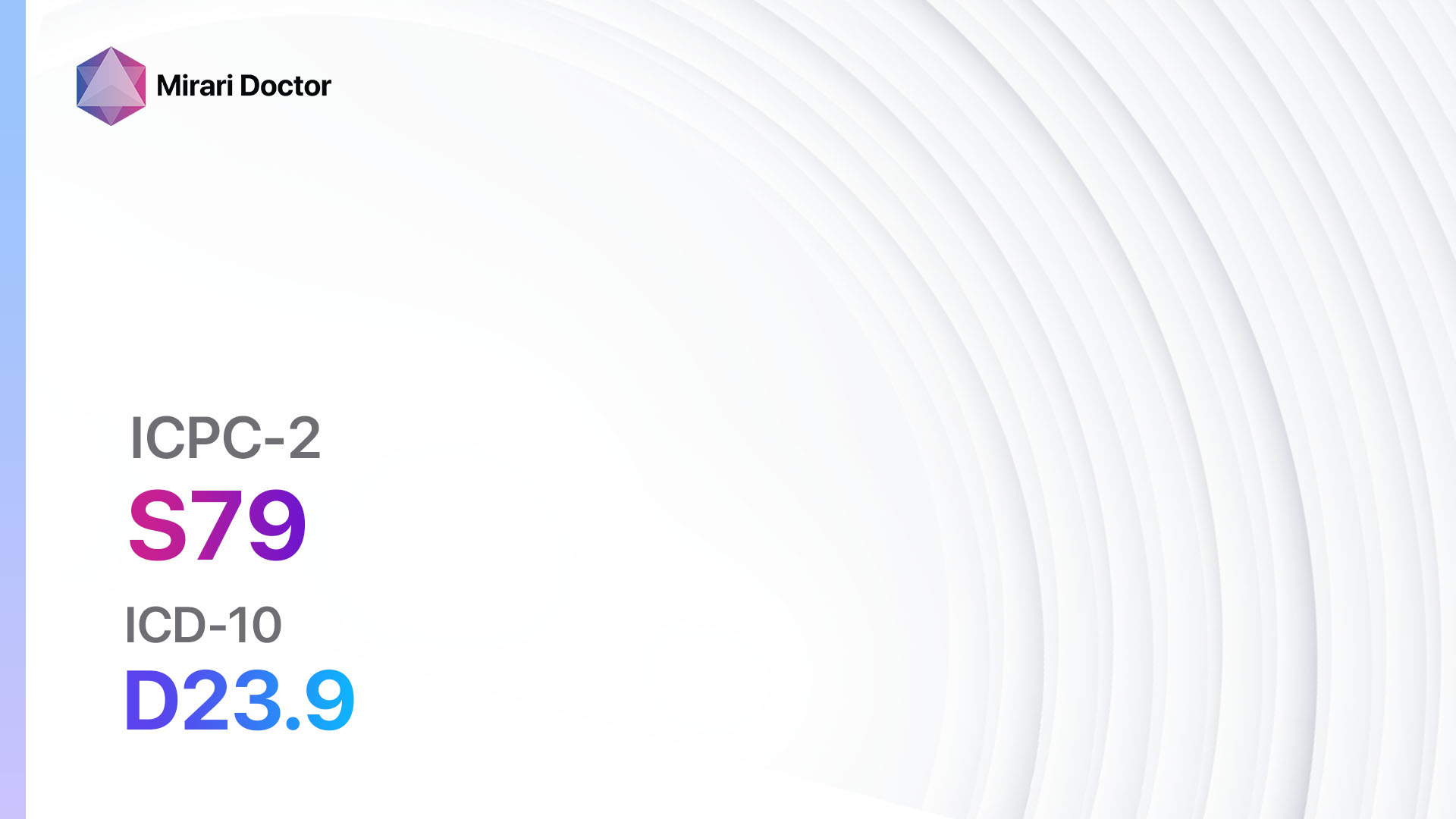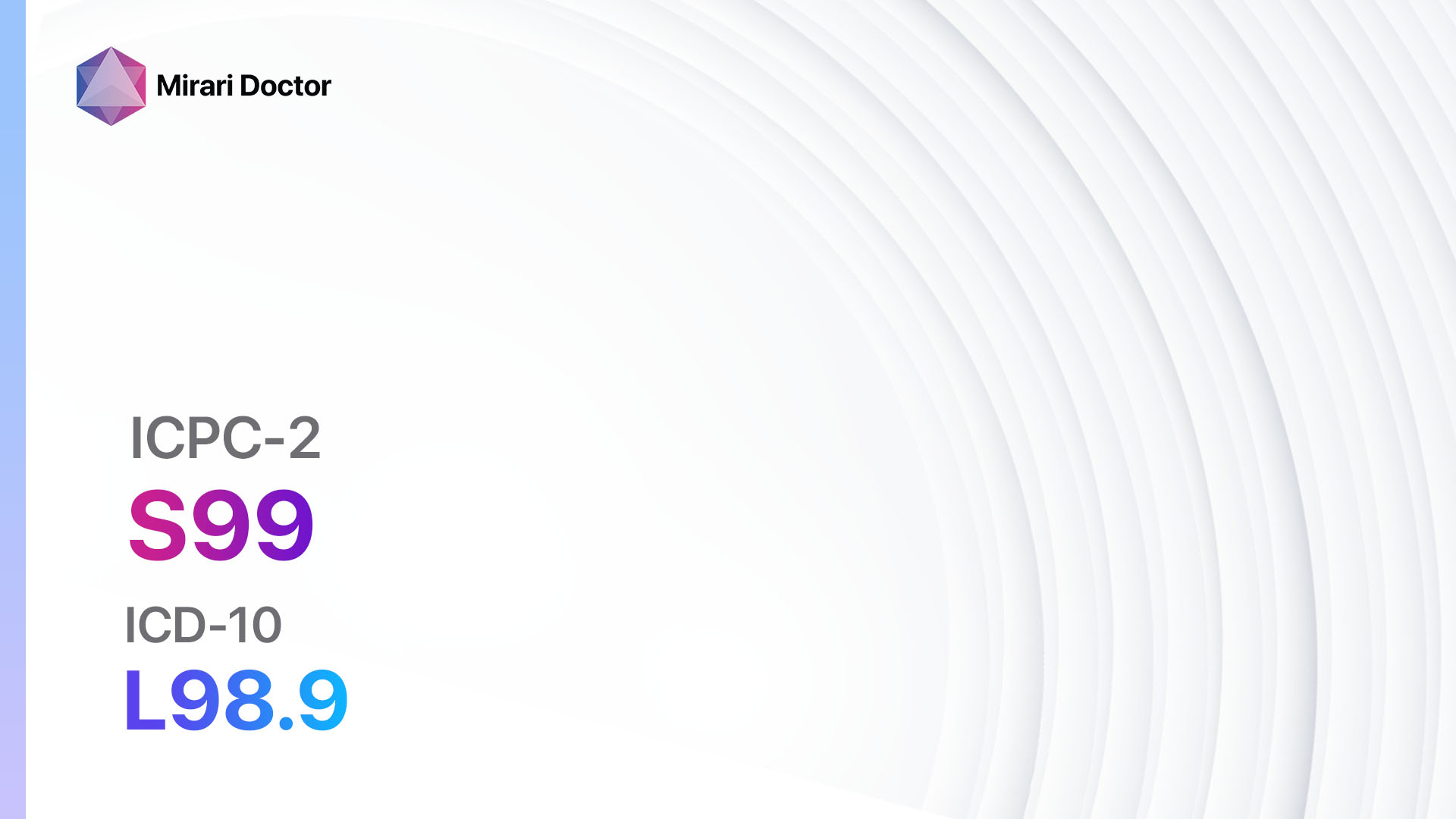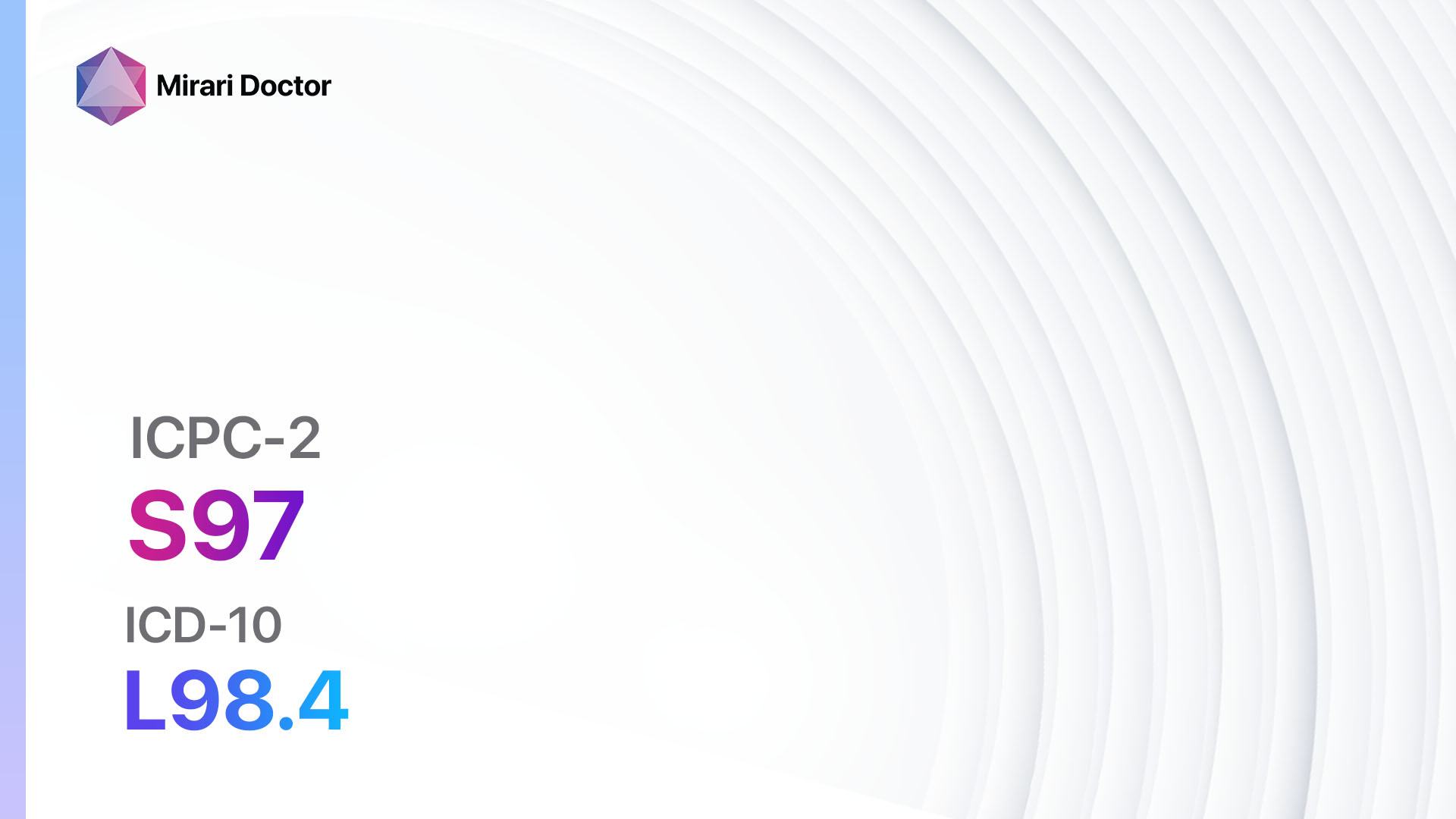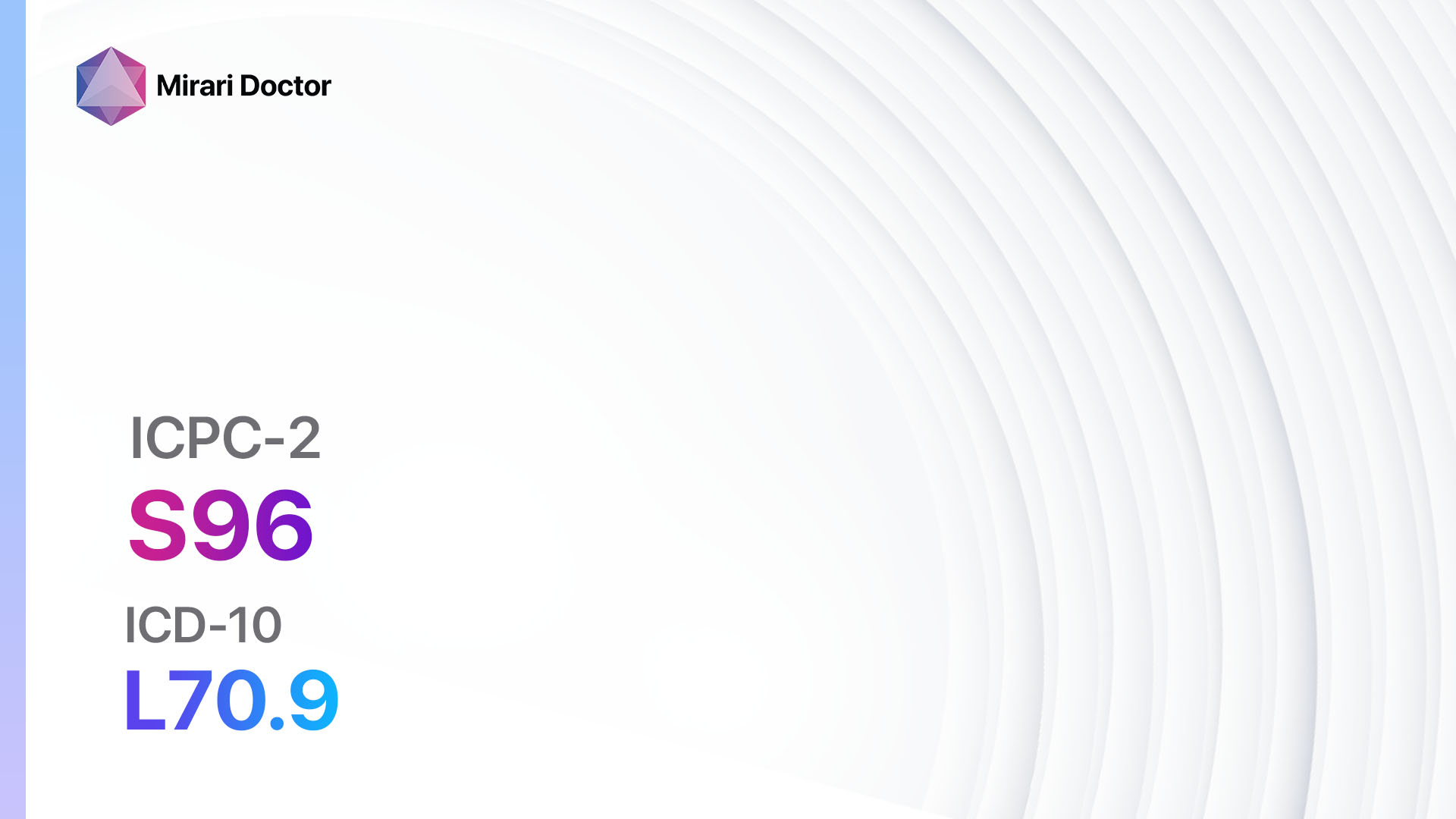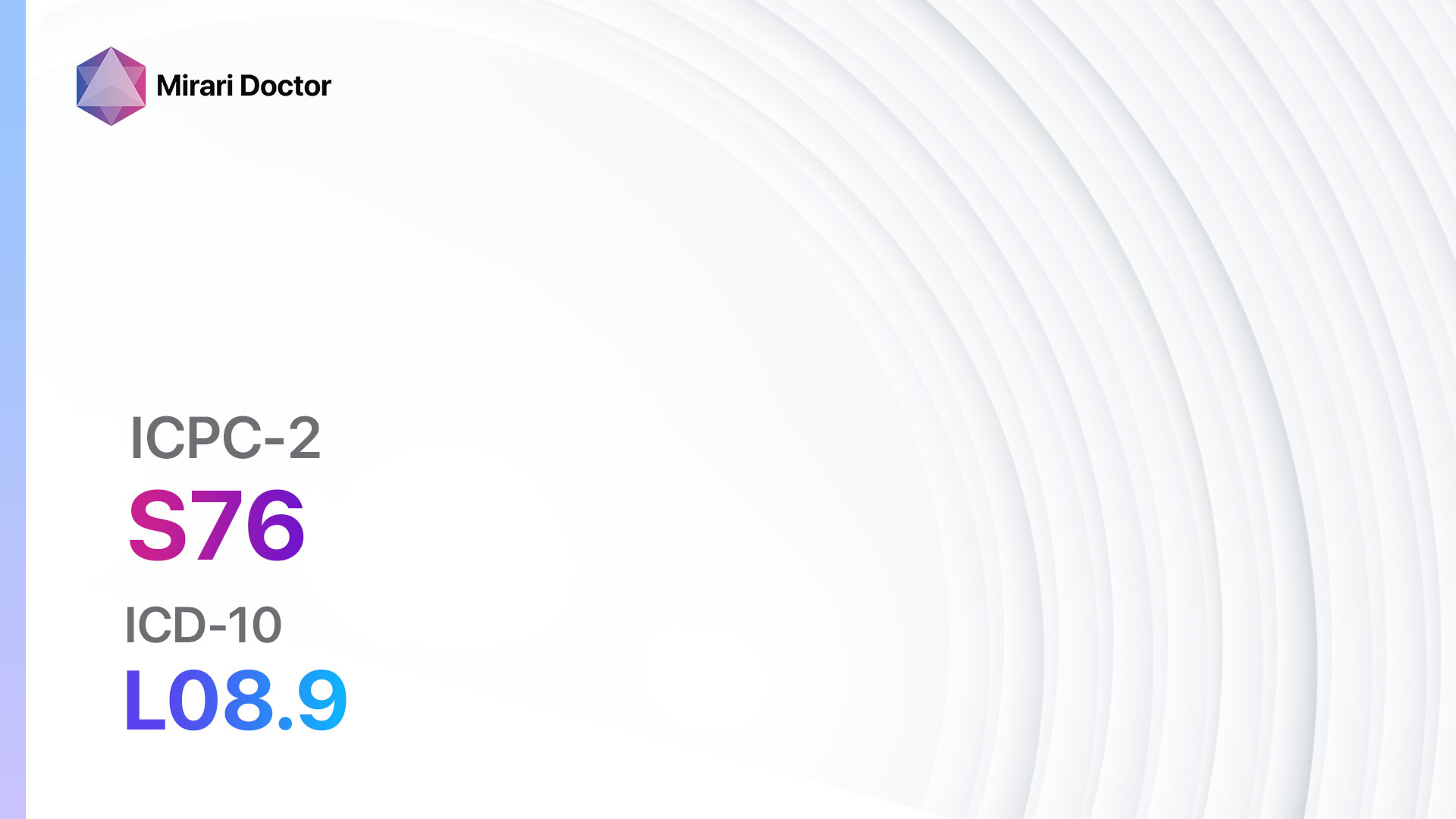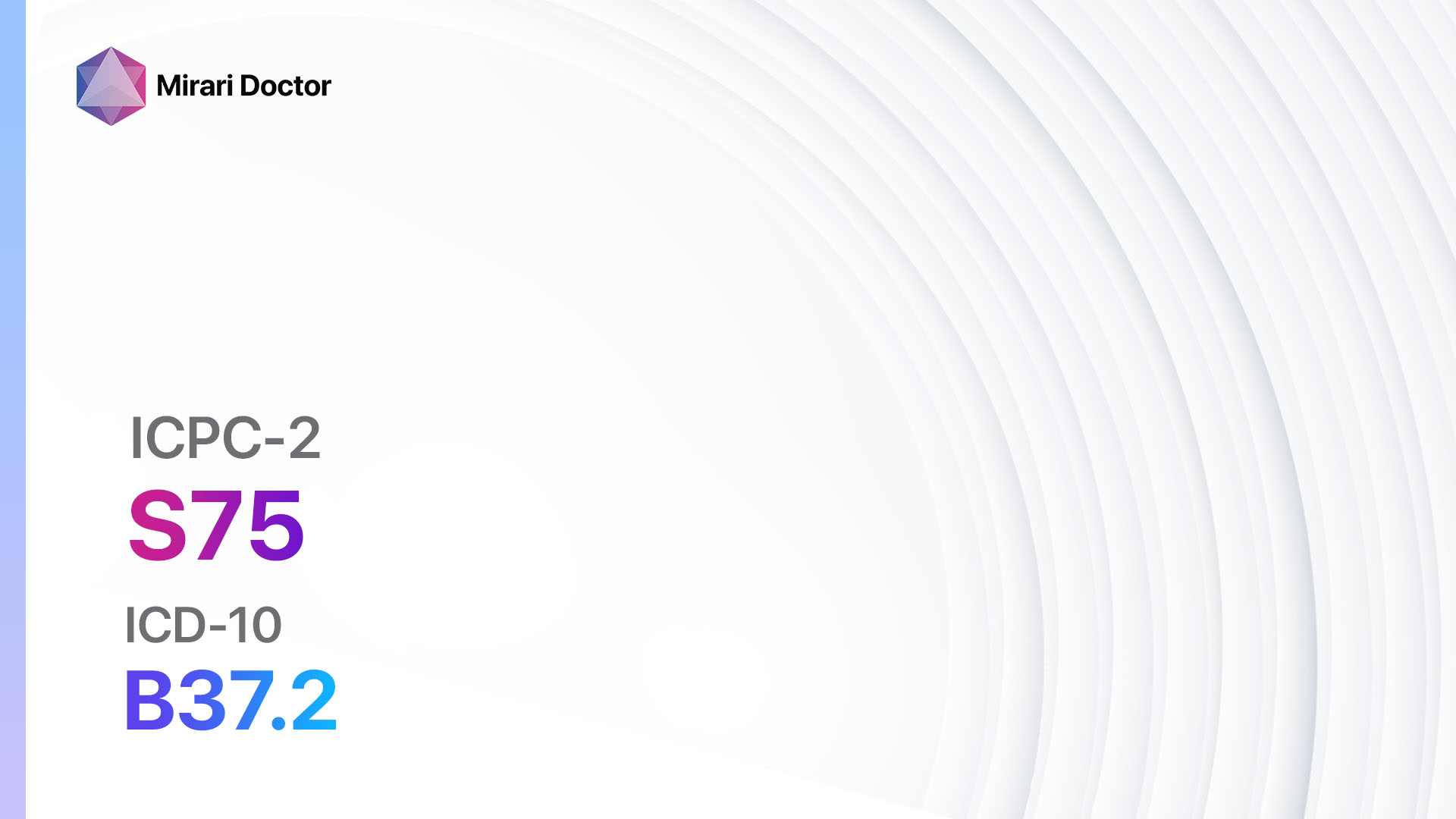
Introduction
Boils and carbuncles are skin infections that occur when a hair follicle or oil gland becomes infected with bacteria. They are characterized by painful, pus-filled bumps on the skin.[1] This guide aims to provide a comprehensive overview of the symptoms, causes, diagnostic steps, possible interventions, and lifestyle interventions for boils and carbuncles.
Codes
- ICPC-2 Code: S10 Boil/carbuncle
- ICD-10 Code: L02.9 Cutaneous abscess, furuncle and carbuncle, unspecified[2]
Symptoms
- Red, swollen bump on the skin
- Pain or tenderness in the affected area
- Formation of a pus-filled head on the bump
- Development of multiple boils in a cluster (carbuncle)
- Fever (in severe cases)
- Fatigue and general malaise (in severe cases)[3]
Causes
- Staphylococcus aureus bacteria: This is the most common cause of boils and carbuncles. These bacteria normally reside on the skin but can enter the body through cuts or breaks in the skin, leading to infection.
- Poor hygiene: Lack of proper hygiene practices can increase the risk of developing boils and carbuncles.
- Weakened immune system: Conditions such as diabetes, HIV/AIDS, and certain medications can weaken the immune system, making individuals more susceptible to skin infections.
- Friction or pressure on the skin: Constant rubbing or pressure on the skin can cause irritation and lead to the development of boils.[4]
Diagnostic Steps
Medical History
- Gather information about the patient’s risk factors, such as diabetes, HIV/AIDS, or other conditions that may weaken the immune system.
- Inquire about any recent cuts, injuries, or skin conditions that may have preceded the development of the boil/carbuncle.
- Ask about the presence of symptoms such as fever, fatigue, or general malaise.[5]
Physical Examination
- Inspect the affected area for the presence of a red, swollen bump.
- Assess the size and tenderness of the bump.
- Look for the formation of a pus-filled head on the bump.
- Check for the presence of multiple boils in a cluster (carbuncle).[6]
Determine Severity
- Classify the boil/carbuncle based on severity and depth:
- Mild: Small, localized boil with minimal pain and inflammation.
- Moderate: Larger boil with increased pain and inflammation.
- Severe: Carbuncle with multiple interconnected boils, accompanied by fever and systemic symptoms.[7]
Laboratory Tests
- Blood tests:
- Complete blood count (CBC) to check for elevated white blood cell count, indicating infection.
- Blood culture to identify the specific bacteria causing the infection.
- Wound culture: Collect a sample of the pus from the boil/carbuncle to determine the type of bacteria present and guide antibiotic treatment.[8]
Diagnostic Imaging
- In most cases, diagnostic imaging is not necessary for the diagnosis of boils and carbuncles. However, if there are signs of complications or spreading infection, imaging modalities such as ultrasound or MRI may be used to assess the extent of the infection.[9]
Other Tests
- Incision and drainage: In some cases, a healthcare professional may need to make a small incision to drain the pus from the boil/carbuncle.
- Biopsy: If there is concern about the possibility of an underlying skin condition or malignancy, a biopsy may be performed to obtain a tissue sample for further analysis.[10]
Follow-up and Patient Education
- Advise the patient to keep the affected area clean and dry.
- Instruct the patient on proper wound care, including the use of warm compresses and over-the-counter antibiotic ointments.
- Emphasize the importance of completing the full course of prescribed antibiotics.
- Schedule a follow-up appointment to monitor the healing process and ensure resolution of the infection.
Possible Interventions
Traditional Interventions
Medications:
Top 5 drugs for Boil/Carbuncle:
- Antibiotics (e.g., Cephalexin, Clindamycin):
- Cost: Generic versions can range from $10 to $50 for a course of treatment.
- Contraindications: Allergy to antibiotics in the same class, history of severe gastrointestinal issues.
- Side effects: Nausea, diarrhea, rash.
- Severe side effects: Severe allergic reactions, Clostridium difficile infection.
- Drug interactions: Warfarin, oral contraceptives.
- Warning: Finish the full course of antibiotics as prescribed.
- Pain relievers (e.g., Acetaminophen, Ibuprofen):
- Cost: Generic versions can range from $3 to $10 for a bottle.
- Contraindications: Allergy to nonsteroidal anti-inflammatory drugs (NSAIDs), history of gastrointestinal bleeding.
- Side effects: Upset stomach, dizziness.
- Severe side effects: Gastrointestinal bleeding, kidney problems.
- Drug interactions: Blood thinners, other NSAIDs.
- Warning: Take with food to minimize stomach upset.
- Topical antibiotics (e.g., Mupirocin):
- Cost: Generic versions can range from $10 to $30 for a tube.
- Contraindications: Allergy to topical antibiotics.
- Side effects: Local skin irritation, itching.
- Severe side effects: Allergic reactions.
- Drug interactions: None reported.
- Warning: Apply a thin layer to the affected area three times daily.
- Warm compresses:
- Cost: Minimal cost.
- Contraindications: None.
- Side effects: None.
- Severe side effects: None.
- Drug interactions: None.
- Warning: Use warm, not hot, compresses to avoid burns.
- Antiseptic cleansers (e.g., Chlorhexidine):
- Cost: Generic versions can range from $5 to $15 for a bottle.
- Contraindications: Allergy to antiseptic cleansers.
- Side effects: Skin irritation, dryness.
- Severe side effects: Allergic reactions.
- Drug interactions: None reported.
- Warning: Use as directed for cleansing the affected area.
Alternative Drugs:
- Tea tree oil: Natural antiseptic with potential antibacterial properties. Apply a small amount directly to the boil/carbuncle.
- Turmeric: Natural anti-inflammatory and antimicrobial agent. Mix turmeric powder with water to form a paste and apply to the affected area.
- Garlic: Natural antibiotic. Crush a garlic clove and apply the juice to the boil/carbuncle.
- Echinacea: Herbal supplement with potential immune-boosting properties. Take as directed to support the body’s natural defense mechanisms.
- Manuka honey: Natural antibacterial agent. Apply a small amount of honey directly to the boil/carbuncle.
Surgical Procedures:
- Incision and drainage: In cases where the boil/carbuncle does not respond to antibiotics or is causing severe pain, a healthcare professional may perform a minor surgical procedure to make an incision and drain the pus.
- Cost: Typically covered by insurance, but out-of-pocket costs can range from $100 to $500.
Alternative Interventions
- Acupuncture: May help improve blood flow and reduce pain.
- Cost: $60-$120 per session.
- Chelation therapy: Controversial treatment involving the administration of chelating agents to remove heavy metals from the body.
- Cost: $75-$150 per session.
- Hyperbaric oxygen therapy: Involves breathing pure oxygen in a pressurized chamber to increase oxygen delivery to tissues.
- Cost: $200-$300 per session.
- Herbal supplements: Some herbs, such as garlic and ginkgo biloba, may have potential benefits for improving circulation.
- Cost: Varies depending on the specific supplement.
Lifestyle Interventions
- Maintain good hygiene: Regularly wash the affected area with mild soap and warm water.
- Avoid squeezing or popping the boil/carbuncle, as this can lead to further infection.
- Apply warm compresses to the affected area for 10-15 minutes several times a day to promote drainage and relieve pain.
- Avoid tight-fitting clothing or fabrics that may irritate the skin.
- Boost the immune system through a healthy diet, regular exercise, and adequate sleep.
- Avoid sharing personal items such as towels or razors to prevent the spread of infection.
It is important to note that the cost ranges provided are approximate and may vary depending on the location and availability of the interventions.
Mirari Cold Plasma Alternative Intervention
Understanding Mirari Cold Plasma
- Safe and Non-Invasive Treatment: Mirari Cold Plasma is a safe and non-invasive treatment option for various skin conditions. It does not require incisions, minimizing the risk of scarring, bleeding, or tissue damage.
- Efficient Extraction of Foreign Bodies: Mirari Cold Plasma facilitates the removal of foreign bodies from the skin by degrading and dissociating organic matter, allowing easier access and extraction.
- Pain Reduction and Comfort: Mirari Cold Plasma has a local analgesic effect, providing pain relief during the treatment, making it more comfortable for the patient.
- Reduced Risk of Infection: Mirari Cold Plasma has antimicrobial properties, effectively killing bacteria and reducing the risk of infection.
- Accelerated Healing and Minimal Scarring: Mirari Cold Plasma stimulates wound healing and tissue regeneration, reducing healing time and minimizing the formation of scars.
Mirari Cold Plasma Prescription
Video instructions for using Mirari Cold Plasma Device – S10 Boil/carbuncle (ICD-10:L02.9)
| Mild | Moderate | Severe |
| Mode setting: 1 (Infection) Location: 0 (Localized) Morning: 15 minutes, Evening: 15 minutes |
Mode setting: 1 (Infection) Location: 0 (Localized) Morning: 30 minutes, Lunch: 30 minutes, Evening: 30 minutes |
Mode setting: 1 (Infection) Location: 0 (Localized) Morning: 30 minutes, Lunch: 30 minutes, Evening: 30 minutes |
| Mode setting: 2 (Wound Healing) Location: 0 (Localized) Morning: 15 minutes, Evening: 15 minutes |
Mode setting: 2 (Wound Healing) Location: 0 (Localized) Morning: 30 minutes, Lunch: 30 minutes, Evening: 30 minutes |
Mode setting: 2 (Wound Healing) Location: 0 (Localized) Morning: 30 minutes, Lunch: 30 minutes, Evening: 30 minutes |
| Mode setting: 10 (Dermatitis/Fungus) Location: 0 (Localized) Morning: 15 minutes, Evening: 15 minutes |
Mode setting: 10 (Dermatitis/Fungus) Location: 0 (Localized) Morning: 30 minutes, Lunch: 30 minutes, Evening: 30 minutes |
Mode setting: 10 (Dermatitis/Fungus) Location: 0 (Localized) Morning: 30 minutes, Lunch: 30 minutes, Evening: 30 minutes |
| Total Morning: 45 minutes approx. $7.50 USD, Evening: 45 minutes approx. $7.50 USD |
Total Morning: 90 minutes approx. $15 USD, Lunch: 90 minutes approx. $15 USD, Evening: 90 minutes approx. $15 USD |
Total Morning: 90 minutes approx. $15 USD, Lunch: 90 minutes approx. $15 USD, Evening: 90 minutes approx. $15 USD |
| Usual treatment for 7-60 days approx. $105 USD – $900 USD | Usual treatment for 6-8 weeks approx. $1,890 USD – $2,520 USD | Usual treatment for 3-6 months approx. $4,050 USD – $8,100 USD |
 |
|
Use the Mirari Cold Plasma device to treat Boil/carbuncle effectively.
WARNING: MIRARI COLD PLASMA IS DESIGNED FOR THE HUMAN BODY WITHOUT ANY ARTIFICIAL OR THIRD PARTY PRODUCTS. USE OF OTHER PRODUCTS IN COMBINATION WITH MIRARI COLD PLASMA MAY CAUSE UNPREDICTABLE EFFECTS, HARM OR INJURY. PLEASE CONSULT A MEDICAL PROFESSIONAL BEFORE COMBINING ANY OTHER PRODUCTS WITH USE OF MIRARI.
Step 1: Cleanse the Skin
- Start by cleaning the affected area of the skin with a gentle cleanser or mild soap and water. Gently pat the area dry with a clean towel.
Step 2: Prepare the Mirari Cold Plasma device
- Ensure that the Mirari Cold Plasma device is fully charged or has fresh batteries as per the manufacturer’s instructions. Make sure the device is clean and in good working condition.
- Switch on the Mirari device using the power button or by following the specific instructions provided with the device.
- Some Mirari devices may have adjustable settings for intensity or treatment duration. Follow the manufacturer’s instructions to select the appropriate settings based on your needs and the recommended guidelines.
Step 3: Apply the Device
- Place the Mirari device in direct contact with the affected area of the skin. Gently glide or hold the device over the skin surface, ensuring even coverage of the area experiencing.
- Slowly move the Mirari device in a circular motion or follow a specific pattern as indicated in the user manual. This helps ensure thorough treatment coverage.
Step 4: Monitor and Assess:
- Keep track of your progress and evaluate the effectiveness of the Mirari device in managing your Boil/carbuncle. If you have any concerns or notice any adverse reactions, consult with your health care professional.
Note
This guide is for informational purposes only and should not replace the advice of a medical professional. Always consult with your healthcare provider or a qualified medical professional for personal advice, diagnosis, or treatment. Do not solely rely on the information presented here for decisions about your health. Use of this information is at your own risk. The authors of this guide, nor any associated entities or platforms, are not responsible for any potential adverse effects or outcomes based on the content.
Mirari Cold Plasma System Disclaimer
- Purpose: The Mirari Cold Plasma System is a Class 2 medical device designed for use by trained healthcare professionals. It is registered for use in Thailand and Vietnam. It is not intended for use outside of these locations.
- Informational Use: The content and information provided with the device are for educational and informational purposes only. They are not a substitute for professional medical advice or care.
- Variable Outcomes: While the device is approved for specific uses, individual outcomes can differ. We do not assert or guarantee specific medical outcomes.
- Consultation: Prior to utilizing the device or making decisions based on its content, it is essential to consult with a Certified Mirari Tele-Therapist and your medical healthcare provider regarding specific protocols.
- Liability: By using this device, users are acknowledging and accepting all potential risks. Neither the manufacturer nor the distributor will be held accountable for any adverse reactions, injuries, or damages stemming from its use.
- Geographical Availability: This device has received approval for designated purposes by the Thai and Vietnam FDA. As of now, outside of Thailand and Vietnam, the Mirari Cold Plasma System is not available for purchase or use.
References
- Habif TP. Clinical Dermatology: A Color Guide to Diagnosis and Therapy. 6th ed. St. Louis, MO: Elsevier; 2016.
- World Health Organization. International Statistical Classification of Diseases and Related Health Problems, 10th Revision (ICD-10). Geneva: WHO; 2019.
- Kang S, Amagai M, Bruckner AL, et al. Fitzpatrick’s Dermatology. 9th ed. New York, NY: McGraw-Hill Education; 2019.
- Tidy C. Boils, Carbuncles and Furunculosis. Patient. 2021. https://patient.info/skin-conditions/boils-carbuncles-and-furunculosis
- Wolff K, Johnson RA, Saavedra AP, Roh EK. Fitzpatrick’s Color Atlas and Synopsis of Clinical Dermatology. 8th ed. New York, NY: McGraw-Hill Education; 2017.
- Goldsmith LA, Katz SI, Gilchrest BA, Paller AS, Leffell DJ, Wolff K. Fitzpatrick’s Dermatology in General Medicine. 8th ed. New York, NY: McGraw-Hill Education; 2012.
- James WD, Elston DM, Treat JR, Rosenbach MA, Neuhaus IM. Andrews’ Diseases of the Skin: Clinical Dermatology. 13th ed. Philadelphia, PA: Elsevier; 2020.
- Elston DM, Ferringer T, Ko CJ, Peckham S, High WA, DiCaudo DJ. Dermatopathology. 3rd ed. Philadelphia, PA: Elsevier; 2019.
- Weston WL, Lane AT, Morelli JG. Color Textbook of Pediatric Dermatology. 5th ed. St. Louis, MO: Mosby; 2017.
- Usatine RP, Riojas M, Stulberg DL, Pfenninger JL. Color Atlas of Family Medicine. 3rd ed. New York, NY: McGraw-Hill Education; 2018.
Related articles
Made in USA



